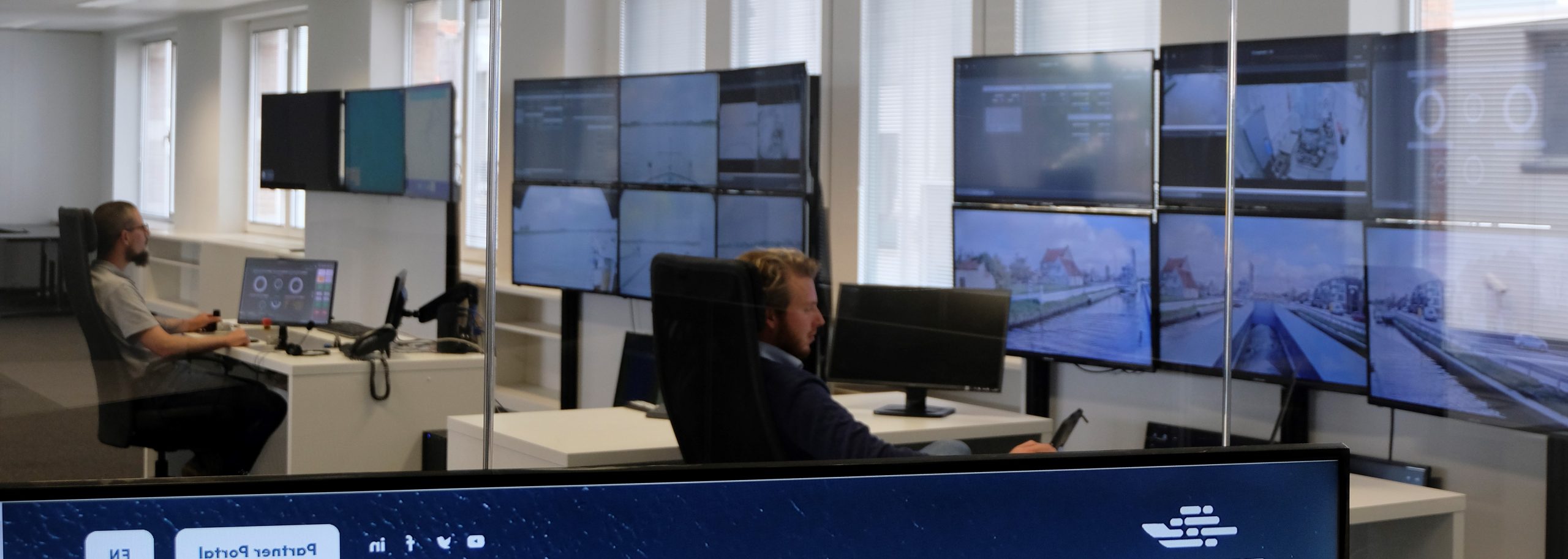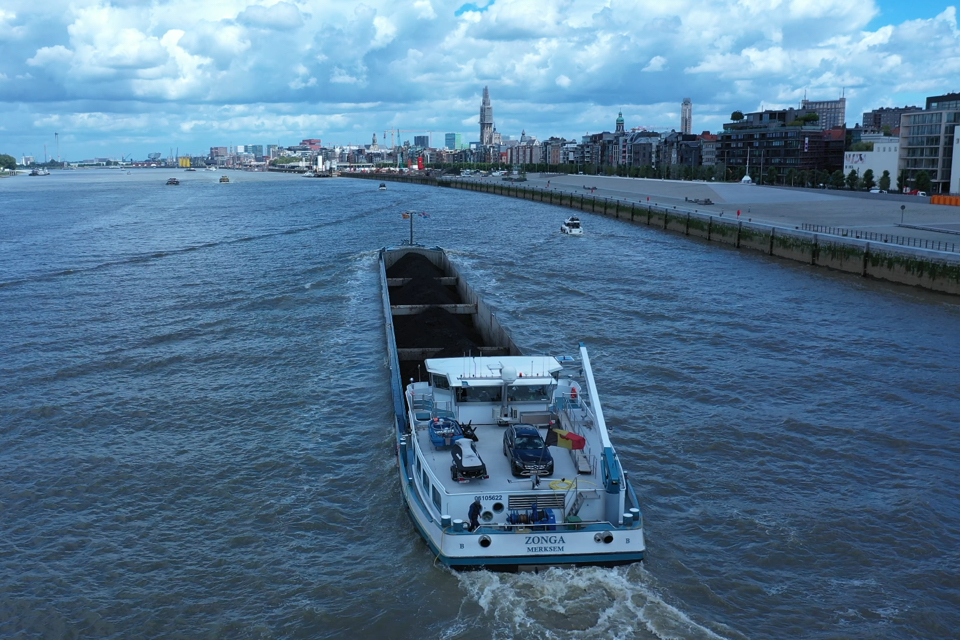Zonga, an automated 135-metre barge, has started transporting polluted soil from a former BP site in the port of Antwerp. The project is being carried out by Seafar, specialised in remote ship management, and DEME Environmental Contractors (DEC).
The former BP site, a brownfield south of Blue Gate, will become the new home of Maritime Campus Antwerp (MCA), but first the polluted soil there has to be removed. The use of an automated barge is part of a pilot project for which all necessary permits have been issued. ‘It was a well-considered decision to transport the polluted soil from the site in this way,’ says Bart Huybrechts, Managing Director of MCA.
‘It perfectly fits MCA’s DNA, bringing together start-ups, scale-ups and large companies to respond to the new developments in the sector. In parallel, we are using water transport, taking more than 330 trucks off the road. A barge consumes three to five times less than a truck per tonne-kilometre (one tonne over one kilometre) and CO2 emissions are about two-thirds lower.’
Automated barge connected to a control centre
A growing economy requires efficient transport. Inland navigation is safe, on time, green and energy-efficient. However, in order to achieve the full potential of the waterway network, innovation must be accelerated, states Seafar, starting with automated or shore supported barges. In this project the Seafar control centre supports the inland vessel Zonga, in cooperation with shipowner Degrave-Antverpia. Technical cooperation took place with the Dutch companies Vissers en van Dijk and Yes BV.
Louis-Robert Cool, CEO of Seafar, explains: ‘The use of automated barges opens up a wide range of new opportunities in general cargo transport. Supporting a master remotely increases the deployability of an inland vessel, optimises operating costs and provides an answer to the shortage of personnel in the sector. We are developing technology to control autonomous vessels from our Seafar control centre. For this purpose, we are implementing our own control system, sensors and software on board the vessel. Afterwards, the ship is connected to the control centre from where a certified master can monitor and control the ship.’

Seafar control centre.
‘We strongly believe in the innovative techniques that make it possible to sail automatically,’ adds Dirk Ponnet, General Manager of DEC. ‘This makes it possible to make efficiency improvements. We are proud to be able to participate in this scoop, which will bring the contaminated soil from the former BP site to our soil purification centre GRC in Kallo via autonomous ships. We are currently investigating the possibilities for autonomous transport at other shipyards too.’








